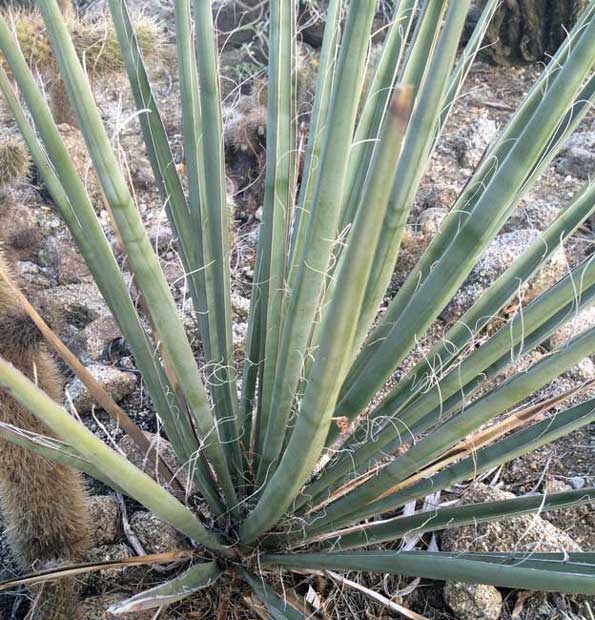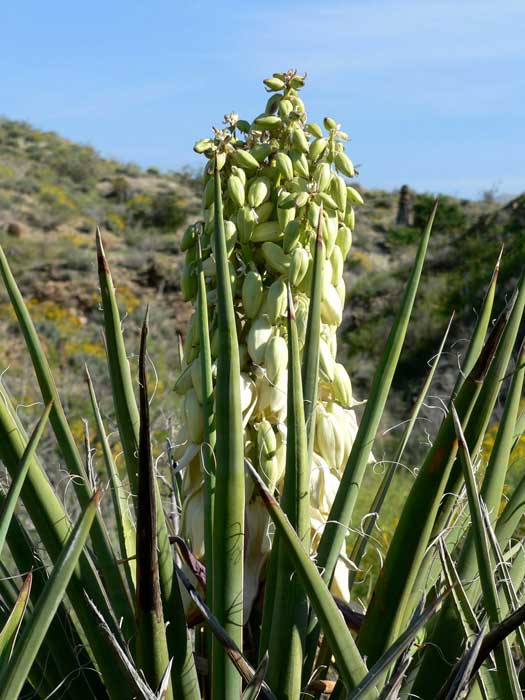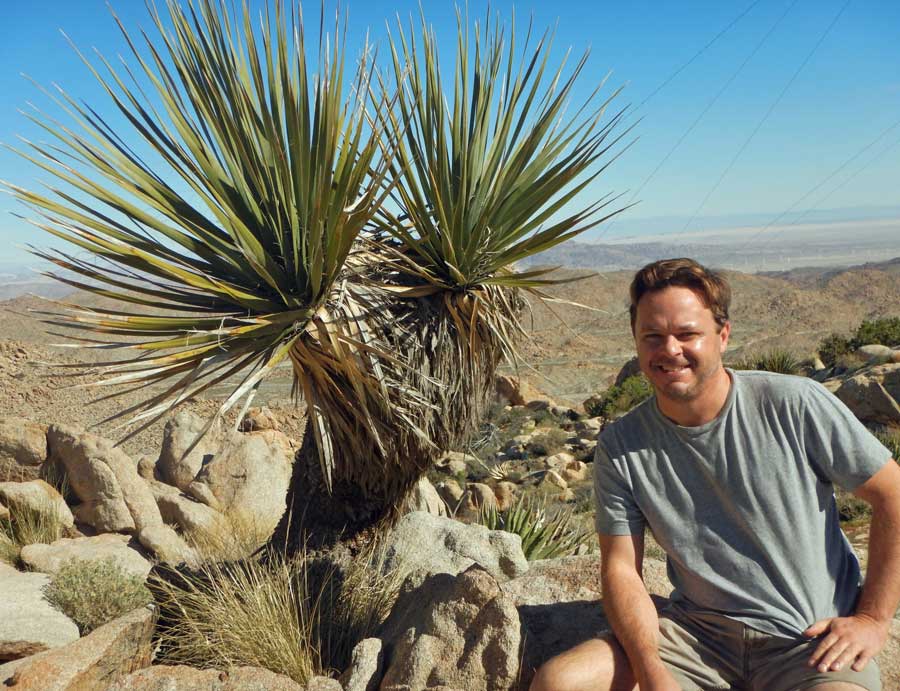Ethnobotany of southern California native plants:
Mohave Yucca (Yucca schidigera)

Tough, valuable fibers are clearly seen on this spiral of mojave yucca leaves.

credit: Stan Shebs GFDL, CC BY-SA 3.0
Mojave yucca in the flowering stage.
Mohave Yucca (Yucca schidigera)
If you spend anytime exploring the southwest, you’ll notice many desert landscapes are punctuated with giant stalks rising up from the sandy floor. This is the flowering stalk of the mojave yucca (Yucca schidgera), also known as the Spanish dagger. This cosmopolitan yucca species is native to most of the desert regions of North America.
Mojave yucca enjoys a vast range, growing happily on dry, rocky slope and flat, desert plains between 800-4,000 feet in elevation. It’s no surprise this plant is so common in the American southwest, as they do very well without any rainwater in the hot, summer months.
Yucca schidigera is an evergreen plant in the Agave family. The plant displays a dense spiral of sharp, spear-like leaves. This spiral of leaves sits on top of a basal trunk that often grows many feet high (up to 15 feet).
A flower stalk emerges in the spring. From this stalk, clusters of white, bell-shaped flowers blossom (see photo). Once the flower fades, long, split-open fruits are left dangling on the dried stalk.
Yucca benefits
Yucca schidigera was not an important food plant for Native Americans. However, the tough fibers from its leaves were an incredible resource to many desert tribes. The leaves were soaked in water and pounded with rocks to extract these valuable fibers. Once extracted, the fibers were woven into cordage, which was then assembled into ropes, fishing nets, shoes, baskets, sleeping mats and thatch for shelters.
Mojave Yucca plant uses
Roots from mojave yucca produce a soapy lather when pounded and mixed with boiling water. This soapy, plant juice was used to wash hair. The primitive shampoo, referred to as ‘amole’, was also used in cleansing rituals.
Additional yucca benefits: Fruits from the stalk could be eaten raw or else roasted. The outer skin of the fruit has a bitter taste and so was often removed before consumption.
Once the fruit dries, it becomes quite easy to crack open the fruit and shake out small, dark seeds. Native tribes ground these seeds into a flour, which was edible but not a favorite.
The prominent flower stalk served additional yucca plant uses. The stalk can be carved into decorative sticks. There are some reports of early people making musical instruments from these stalks, akin to a didgeridoo. We have also heard unconfirmed reports that the stalk was ground into a powder to then serve as a deodorant.

photo credit: Jessica Bredvik
The author and a mojave yucca near The Desert View Tower in Imperial County, CA.
References:
Bean, Lowell John and Katherine Siva Saubel 1972 Temalpakh (From the Earth); Cahuilla Indian Knowledge and Usage of Plants. Banning, CA. Malki Museum Press (p. 150)
Sparkman, Philip S. 1908 The Culture of the Luiseno Indians. University of California Publications in American Archaeology and Ethnology 8(4):187-234 (p. 195)
Please return to our main Ethnobotany of southern California page.
On our main ethnobotany page, we present a clickable list of the southern California native plants that became a part of the culture of Native Americans and early European settlers. These plants were used for medicine, food, shelter, drink, tools and art.
Warning: The information about plants on this website is intended for general educational purposes only. The author of this website accepts no responsibility for problems arising from the user’s misidentification, misuse, or use of plants. Please read the full TERMS associated with this website.
